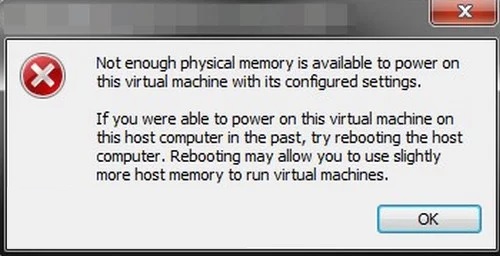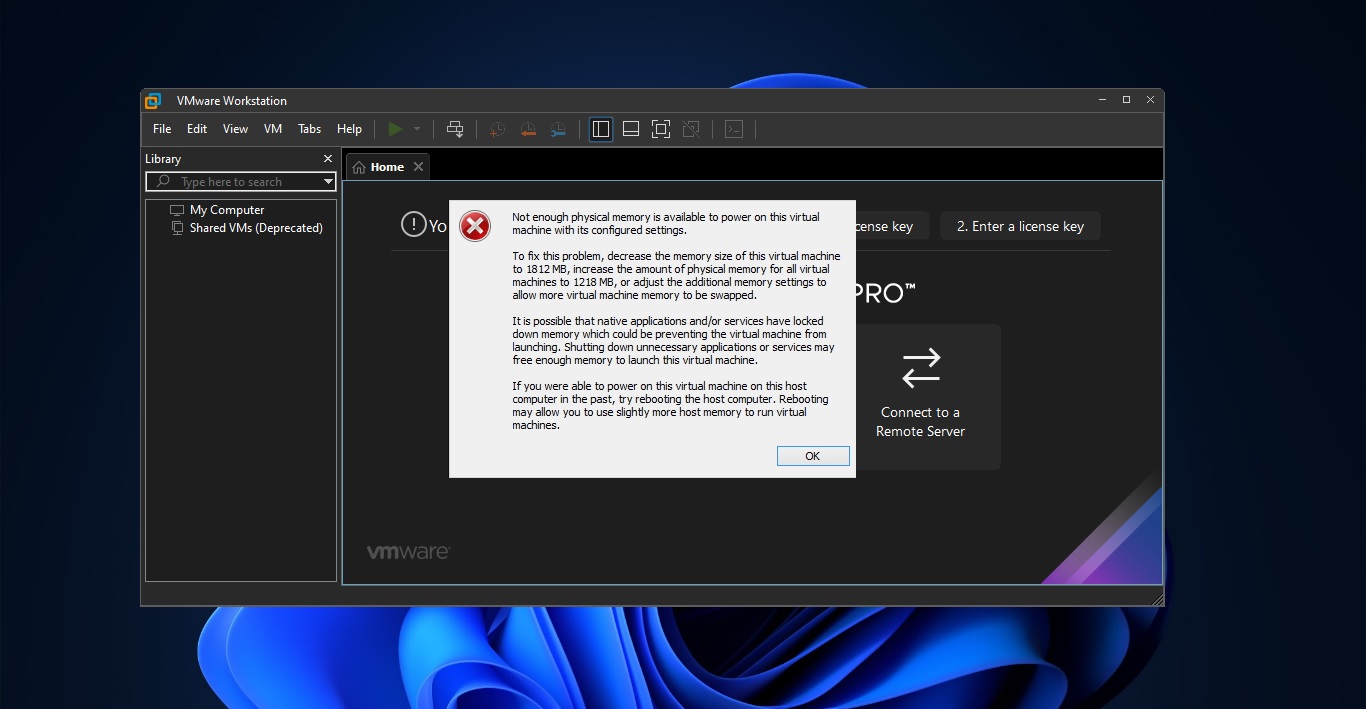

- There is not enough physical memory to run vmware on mac for mac#
- There is not enough physical memory to run vmware on mac upgrade#
- There is not enough physical memory to run vmware on mac pro#
- There is not enough physical memory to run vmware on mac free#
In the VMWare library, click your VM and make sure it is shut down.
There is not enough physical memory to run vmware on mac pro#
Can’t be sure.) I’m on a 27″ iMac Pro but editing the VMX file worked. However, I did find an old tip that was worth a go… and for me, at least, it only bloody worked. I’ve found nothing yet that specifically relates to VMWare Fusion on macOS Big Sur and a black screen on the VM. However, on this occasion, that was all fine. The VM starts but remains in a black screen without any way to access to the machine itself. This was fixed usually either by a filthy hack or the proper way which is by allowing VMware Fusion to Screen Record through the System Prefs. Hi there, I followed your guide, but even with your suggests in this page, I’m not able to start my Mac High Sierra VM in my Win 10 computer with i7 processor. There was a very similar issue when Catalina came out, and this was caused by new Security / Privacy controls around Screen Recording. but even then, starting the VM ends up in a black screen. VMwares knowledge base article, Setting Custom Video Memory Size in Fusion, shows the setting to change: Setting Custom Video Memory Size in Fusion There is no way to choose a different video memory size through the user interface. Main issue is that trying to start a VM results in a bunch of error messages… these seem to get resolved by changing the compatibility level of the VM…. $100 later and I have Fusion 12 and… things are still broken.
There is not enough physical memory to run vmware on mac for mac#
Or preferably use Docker for Mac if your OS supports it, its the latest product and has much better host integration than Docker Machine.
There is not enough physical memory to run vmware on mac upgrade#
After a quick Google, it was evident it was a VMware incompatibility issue - Fusion 11 will not run on Big Sur and you must upgrade to VMWare 12. Instead you can run Docker Machine on the Mac directly and use Parallels to create the Linux VM - which means Docker is running in a Linux VM on your Mac, and you dont need nested virtualization.

I was previously on v11.something and when trying to launch a VM got greeted with “Host OS does not have enough physical memory to launch this VM” which was a complete load of bollocks. Gah.īut anyway, one real issue I have had was with VMware Fusion. I’m sure there’s a huge amount of “don’t like change” in there but there are many things that are annoying the crap out of me with Big Sur. And so far, Big Sur vs Catalina is just a bit nightmare. I’m not sure why I do this sort of thing quite so freely… I always naively assume everything will be OK. Don't create mission critical servers on this way.Recently updated to macOS Big Sur. It is okay for testing a docker container on a Windows machine, what you've developed on a Linux. Sometimes it will be a little bit buggy, but only your HyperV will crash out, your virtual Win, or your host machine won't.
There is not enough physical memory to run vmware on mac free#
That message means you do not have enough free memory in which to load the 8gb VM.

12GB virtual RAM for the Windows VM running on it So its 20 GB for VMs (havent counted dynamic memory) + leave 2.5 GB for the host so the total is 22.5 GB and I still have around 11.5 GB left on the server.



 0 kommentar(er)
0 kommentar(er)
